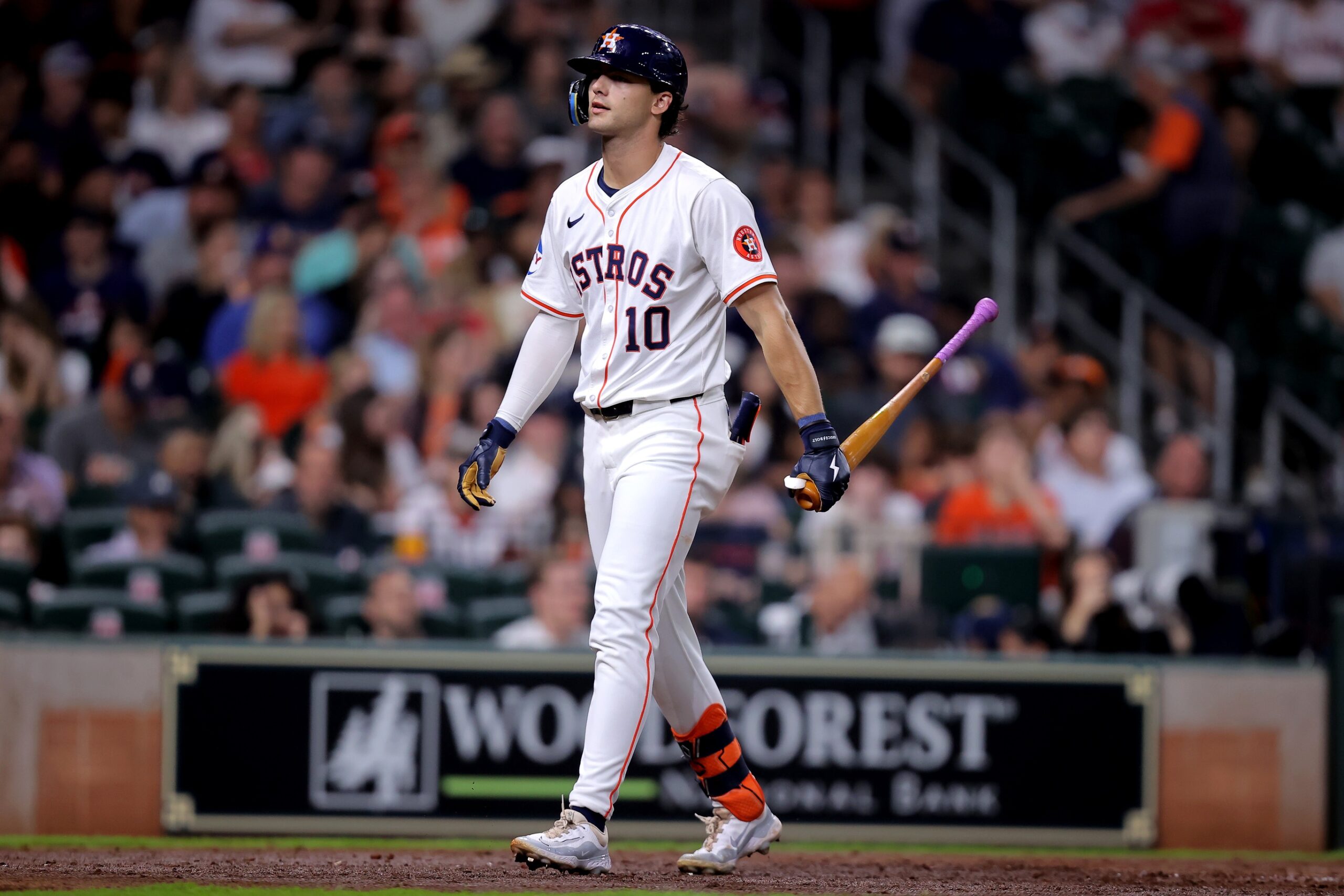Minor League Hitters Struggling with Umpire Strike Zones

In my latest Big Kids article, I noticed three rookie hitters (Tyler Black, Joey Loperfido, and Jordan Beck) are struggling with the major league strike zone. Here are their AAA and MLB strikeout and walk rates.
| Name | AAA K% | MLB K% | Diff | AAA BB% | MLB K% | Diff |
|---|---|---|---|---|---|---|
| Jordan Beck | 19.8% | 45.8% | 26.0% | 14.9% | 0.0% | -14.9% |
| Joey Loperfido | 30.3% | 41.2% | 10.9% | 13.1% | 5.9% | -7.2% |
| Tyler Black | 13.7% | 34.8% | 21.1% | 11.0% | 4.3% | -6.7% |
| Average | 21.3% | 40.6% | 19.3% | 13.0% | 3.4% | -9.6% |
With the trio seeing major differences, I compared all hitters transitioning from AAA and divided them into those making a debut and veterans. The results line up with what I’ve observed so far, hitters are struggling to adjust to the major leagues.
For the past two seasons, the players in AAA have used two forms of an automatic strike zone. While the zone size has been adjusted, the rules remained the same. Here is an explanation:
For Tuesday-Thursday games in Triple-A and the ABS-equipped FSL parks, the ABS system will call all pitches. The home plate umpire will relay the call after hearing it in their earpiece. The ABS challenge system will be in effective for Friday through Sunday games. The home plate umpire will call pitches, but the batter, pitcher or catcher can appeal their strike call. The ABS system will then rule on whether the call stands or is overturned. Each team gets three unsuccessful challenges per game. Successful challenges do not count toward that total. All challenges must be made within two seconds of the call.
Hitters are getting used to the perfect minor-league zone and might struggle in the majors because of the difference.
To isolate the new players, I grouped the players who debuted in the season in question and everyone else. Since the rules were in place last season, I created a separate dataset for each season. Additionally, I included the batters who spent time in AAA but debuted in a previous season.
Because I was dealing with possible small samples, I found the median and weighted change in the walk and strikeout rates. For the median, I weighted the plate appearances by the harmonic mean between AAA and the majors. Here are the results:
| Player Group | Weighted K% | Weighted BB% | Median K% | Median BB% | Matched PA |
|---|---|---|---|---|---|
| 2023 Debuts | 6.4% | -4.5% | 6.5% | -5.4% | 11572 |
| 2023 Others | 4.1% | -4.2% | 4.0% | -4.0% | 28704 |
| 2024 Debuts | 8.8% | -8.1% | 5.1% | -9.5% | 688 |
| 2024 Others | 0.8% | -4.0% | -0.3% | -6.0% | 2060 |
An 8% change in walk and strikeout rate seems large with the previous difference around 4% to 6%. In both seasons, the players debuting struggled more than those who previously made the jump.
Here are a couple of my guesses on the reason behind the difference.
- One issue is that I only matched 688 PA this season. For the guys who debuted last season, their total ended up near 12,000. The difference could be a sample size issue. On a similar note, it might take a certain number of plate appearances for hitters to adjust and the difference could eventually shrink to the 2023 levels
- Many teams could have spent the offseason finding the best edges to attack hitters making the jump from robot to regular umps.
Rookies are struggling as they adjust from the AAA automatic strike zone to the one in the majors. This season’s difference is more than in previous seasons, but it is tough to know if the trend will continue or if it’s a statistical anomaly.
Jeff, one of the authors of the fantasy baseball guide,The Process, writes for RotoGraphs, The Hardball Times, Rotowire, Baseball America, and BaseballHQ. He has been nominated for two SABR Analytics Research Award for Contemporary Analysis and won it in 2013 in tandem with Bill Petti. He has won four FSWA Awards including on for his Mining the News series. He's won Tout Wars three times, LABR twice, and got his first NFBC Main Event win in 2021. Follow him on Twitter @jeffwzimmerman.
Good stuff, thanks!
The data probably doesn’t exist, but it would be fascinating to look at heat maps from all these minor league robot ups, and tease out the differences in the strike zone versus the differences due to major league pitchers just being better